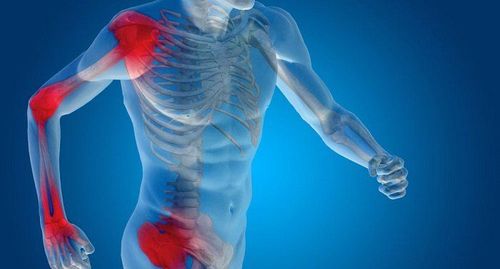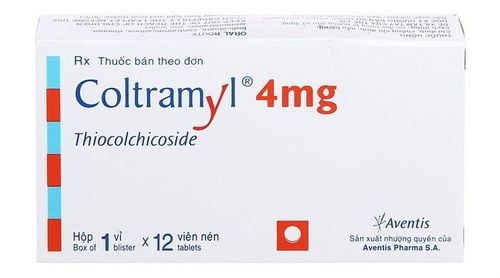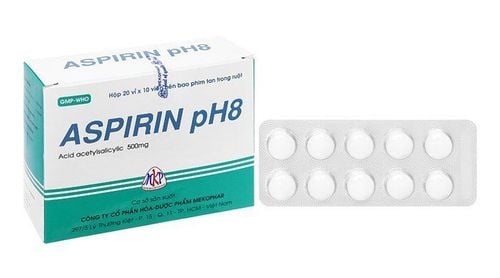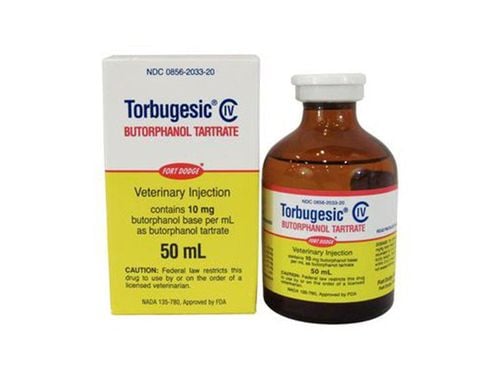This is an automatically translated article.
Muscle pain is a common condition, it greatly affects the patient's daily activities. Everyone experiences muscle pain differently, when the pain exceeds your tolerance and affects your life, you can take some medications to reduce the pain and discomfort.
1. What is muscle pain?
Myalgia, also known as myalgia, is a condition in which a group of muscles is tight or contracted, which can be caused by many causes, leading to pain. Muscle pain can occur in one location or many positions due to overuse, muscle damage during movement, myositis, musculoskeletal disease, systemic disease...
Myalgia can range in severity. Mild that doesn't make you too uncomfortable, but can be so severe that it makes it hard for you to use your muscles. In addition, muscle pain can cause fatigue and limit your ability to move freely.
Almost all of us have experienced muscle pain at least once, affecting our daily activities. Sometimes it needs to be treated with medications to help ease discomfort.
2. What causes muscle pain?
There are many causes that can lead to muscle pain such as:
Due to overwork or exercise: People who work or exercise too much cause the muscles to suddenly increase movement, the body If there is not enough oxygen available, energy will be supplied by anaerobic metabolism. The substances produced by this process are the cause of muscle pain. Sometimes, too much activity will cause minor injuries such as muscle strains, sprains, and pain. Stress: When the body is under stress, fatigue can secrete a hormone that makes muscles tense and increases sensitivity to pain. In addition, when stressed, the operating speed of the circulatory system decreases, so the blood circulation and oxygen exchange for the cells in the body decrease, causing muscle pain. Due to viral infection: When infected with some viruses that cause illness such as flu, cold, dengue fever ... also cause the patient to have body aches. Muscle pain due to muscle infection: Some types of bacteria can attack and cause inflammation of the muscle, leading to symptoms such as pain, swelling, heat, fever... In this case, in addition to using pain relievers and fever reducers, it is necessary to Use antibiotics to treat bacterial infections. Due to pathological causes, some osteoarthritis diseases also cause muscle pain: Osteoarthritis: The degenerative joint condition also causes muscle pain around the degenerated area. When there is pain, the muscles will contract, increasing the pain. Manifestations of pain often increase when walking and moving and resting, pain is reduced, can be seen in joints such as knees, cervical spine and lumbar spine. Arthritis: Similar to osteoarthritis, when the pain is caused by arthritis, the muscles also contract and cause pain. Fibromyalgia: Fibromyalgia is pain that occurs in the muscles of the human body, leading to pain all over the body, fatigue and insomnia or depression, but without physical damage to the muscles, bones, or joints. .

Bị đau cơ có nhiều nguyên nhân gây ra trong đó có thoái hoá khớp
3. How to use medicine to treat muscle pain
Muscle pain is a common condition, but how is the use of the drug, in cases of pain caused by exercise, it usually relieves itself after 2 days with rest, cold compresses, compression bandages - elevation of the place. injury (RICE principle). However, in cases where pain is not relieved or pain due to other pathological causes, the patient feels pain that greatly affects activities.
Medicines are used to treat the symptoms of myalgia, if there is a cause, it is necessary to treat the cause of the disease to improve the muscle pain.
Some drugs used for muscle pain and indications for use:
Analgesic group: Used in steps, from mild pain relievers to strong pain relievers and combinations of drugs. Paracetamol (acetaminophen): A common pain reliever and fever reducer, commonly used to relieve mild to moderate pain. The drug is administered at a dose of 10-15mg/kg body weight and given at least 4 to 6 hours apart if the patient is still in pain. Paracetamol is often prescribed in cases of muscle pain such as muscle tension headaches, lower back pain... Non-steroidal anti-inflammatory drugs (NSAIDs): In addition to pain relief, the drug also has anti-inflammatory and antipyretic effects. . The drug has the effect of cutting off the production of chemical mediators that cause inflammatory reactions, so it has analgesic and antipyretic effects. Indicated for use in case of muscle pain after overexertion, pain due to arthritis, degeneration... Some drugs of this group include: Over-the-counter drugs including ibuprofen, naproxen, aspirin... The doctor's prescription includes diclofenac, meloxicam, celecoxib... Note, this drug has many side effects such as effects on the gastrointestinal tract, increasing the risk of stomach ulcers, increasing the risk of stroke...so do not use it. used for more than 5 days without consulting a specialist. Corticosteroids: This is a group of steroids that have strong pain-relieving effects. Used in cases of severe pain, pain due to autoimmune disease and pain that has not responded to previous NSAIDs. However, the use of the drug is very careful because if used improperly, it will cause many side effects such as abdominal pain, hair growth, osteoporosis, adrenal insufficiency, weakened immune system... This medicine should be used in the correct dose and way prescribed by your doctor. Opioids: This is a group of narcotic pain relievers. Opioids are very strong pain relievers, often used for severe muscle pain. Opioids help block pain receptors in the brain and also affect heart rate and breathing. Indicated for use when the above pain relief measures have been used correctly but do not bring the desired effect. Some common opioid medications include: morphine, fentanyl... Side effects of opioids can include drowsiness, feeling nauseous, constipation, slow heart rate and slow breathing. This drug requires prescription and if taken for a long time can lead to addiction. So talk to your doctor if you are taking it for a long time. Muscle relaxants: In addition to pain relievers, muscle relaxants are often used in combination with pain relievers to increase effectiveness. The drug acts on the central nervous system, resulting in muscle relaxation. However, you need to know when to take muscle relaxants? The drug is used in combination when there is a state of skeletal muscle spasms, muscle spasms, and a lot of pressure such as pain caused by osteoarthritis, acute neck pain... Some common muscle relaxants are baclofen, cyclobenzaprine , myonal... Analgesics are used according to pain relief step, initially using one drug, if there is no improvement, then a combination of additional drugs. In addition, if you have muscle pain, you should combine it with non-drug measures to improve the effect.

Uống thuốc giãn cơ khi nào sẽ được bác sĩ thông báo sau khi bạn được thăm khám
4. Non-drug treatment and precautions
Non-drug methods in the treatment of muscle pain can be applied such as:
Rest, avoid excessive muscle movement to increase pain. In cases of pain caused by overtraining, follow the rice principle of resting - applying cold - compressing - elevating the injured place. Apply a cool compress by using an ice pack and then applying it to the painful area, do not apply ice directly to the muscle. In case of chronic pain, long-term pain can be warm, massaged on the painful area. Acupuncture: In cases of muscle pain due to osteoarthritis, arthritis, acute neck pain... can use acupuncture to relieve pain. Preventing muscle pain with the following measures:
Regular and appropriate exercise for your own health will help strengthen the cardiovascular system and improve muscle tone to limit muscle pain. A thorough warm-up before exercising is a very effective way to prevent muscle pain, especially for beginners. It is recommended to perform a few gentle warm-up movements before exercise to let the muscles get used to the intensity of the exercise, avoiding the inadequate supply of oxygen to the sore muscles. Stress and anxiety should be controlled because it increases pain levels, due to increased sensitivity to pain. Fully supplement foods containing B vitamins, calcium, potassium, magnesium, protein... in the daily diet. Thus, through the article, hopefully you have understood when you have muscle pain what to take and what combined measures to reduce pain and prevent this condition from recurring. When taking prescription drugs, it is necessary to consult a doctor and prescribe them. Avoid improper use causing serious side effects.
Please dial HOTLINE for more information or register for an appointment HERE. Download MyVinmec app to make appointments faster and to manage your bookings easily.













